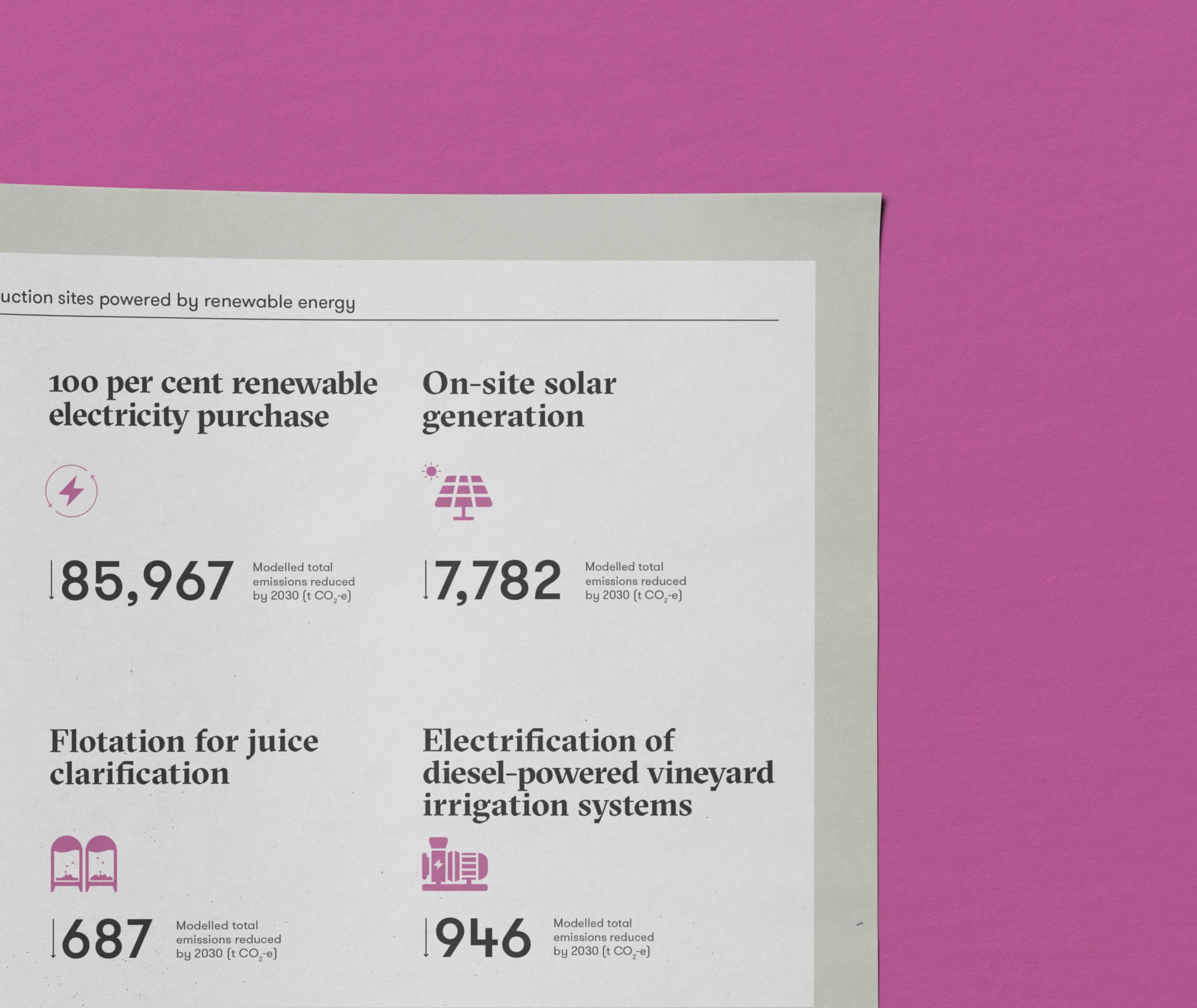
A comprehensive plan for lower emissions in winemaking
Wine Australia's Emissions Reduction Roadmap
An industry-led approach to cutting emissions while ensuring prosperity for grape growers and winemakers.
The Challenge
The Australian wine industry is increasingly experiencing the physical and transitional impacts of a changing climate.
Rising costs of production, challenges to market access and increasing climate variability are very present and emerging threats.
This project presented the opportunity for the Australian wine industry to review its current approach to production inputs and operational efficiencies to support a future operating environment that is lower emissions, more productive and more prosperous for Australian grape growers and winemakers.
Key Deliverables
Sector-wide Emissions Reduction Roadmap
Practical Guidance Document for Producers
Carbon Accounting Tools Document
Thorough Industry Engagement
The Approach
Wine Australia placed significant importance on the collaborative development of an emissions reduction plan, ensuring active involvement from the industry to create a product that truly belongs to and is embraced by the sector.
To achieve this, Edge Impact worked closely with Wine Australia’s stakeholders in designing an extensive stakeholder engagement plan which saw multiple industry webinars, interviews, convening of an expert reference panel, surveys and workshops, targeted to participants across the entire wine production and supply chain.
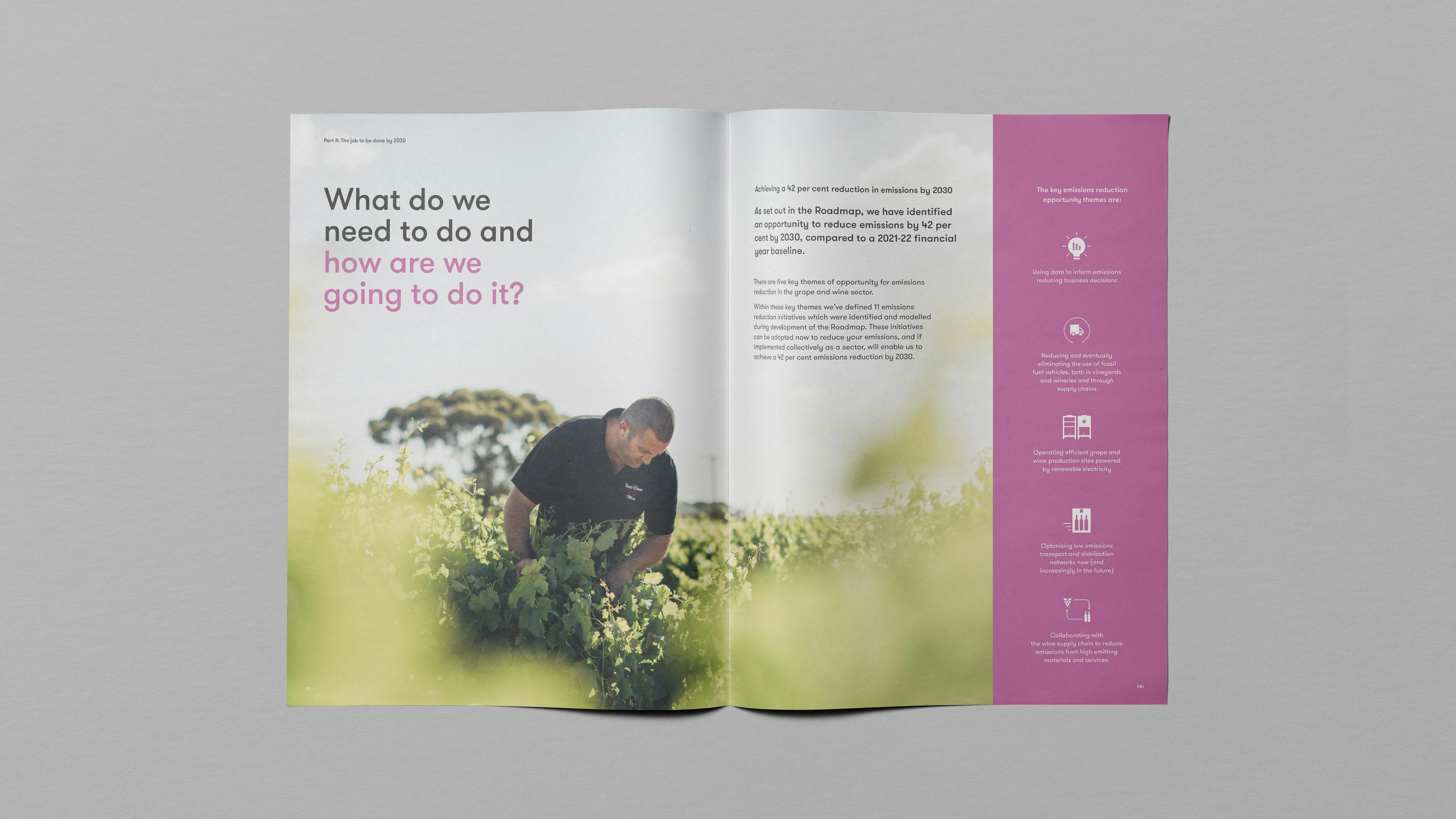
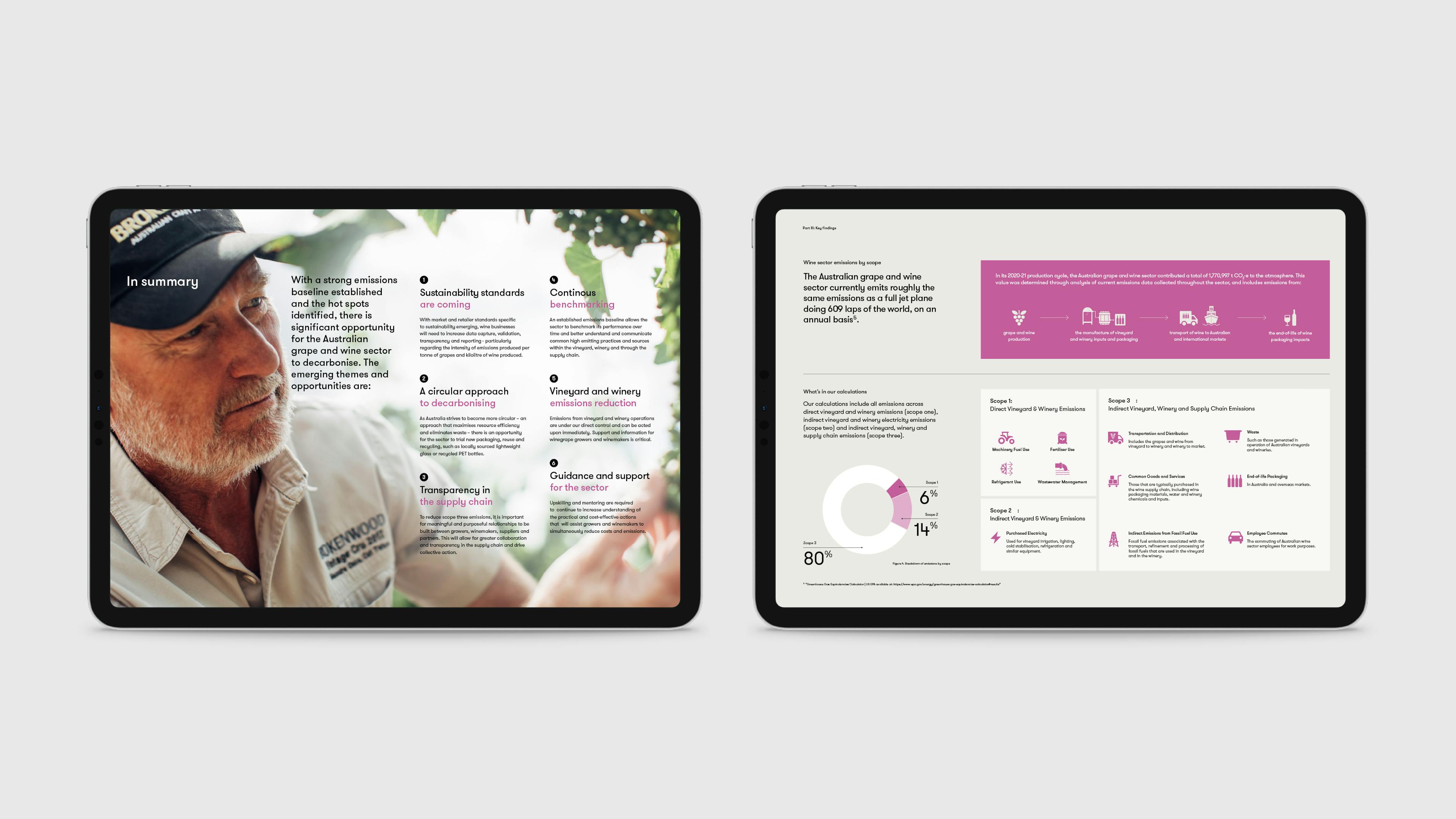
Edge Impact drew on existing industry data to develop an overarching target for the industry’s emissions reduction trajectory, supported by 11 specific emissions reduction initiatives available across the wine value chain.
Each initiative is supported by modelling to ensure it is realistic, and stakeholder engagement to ensure it is viable, resulting in an achievable pathway for the wine sector to a 42% reduction by 2030.

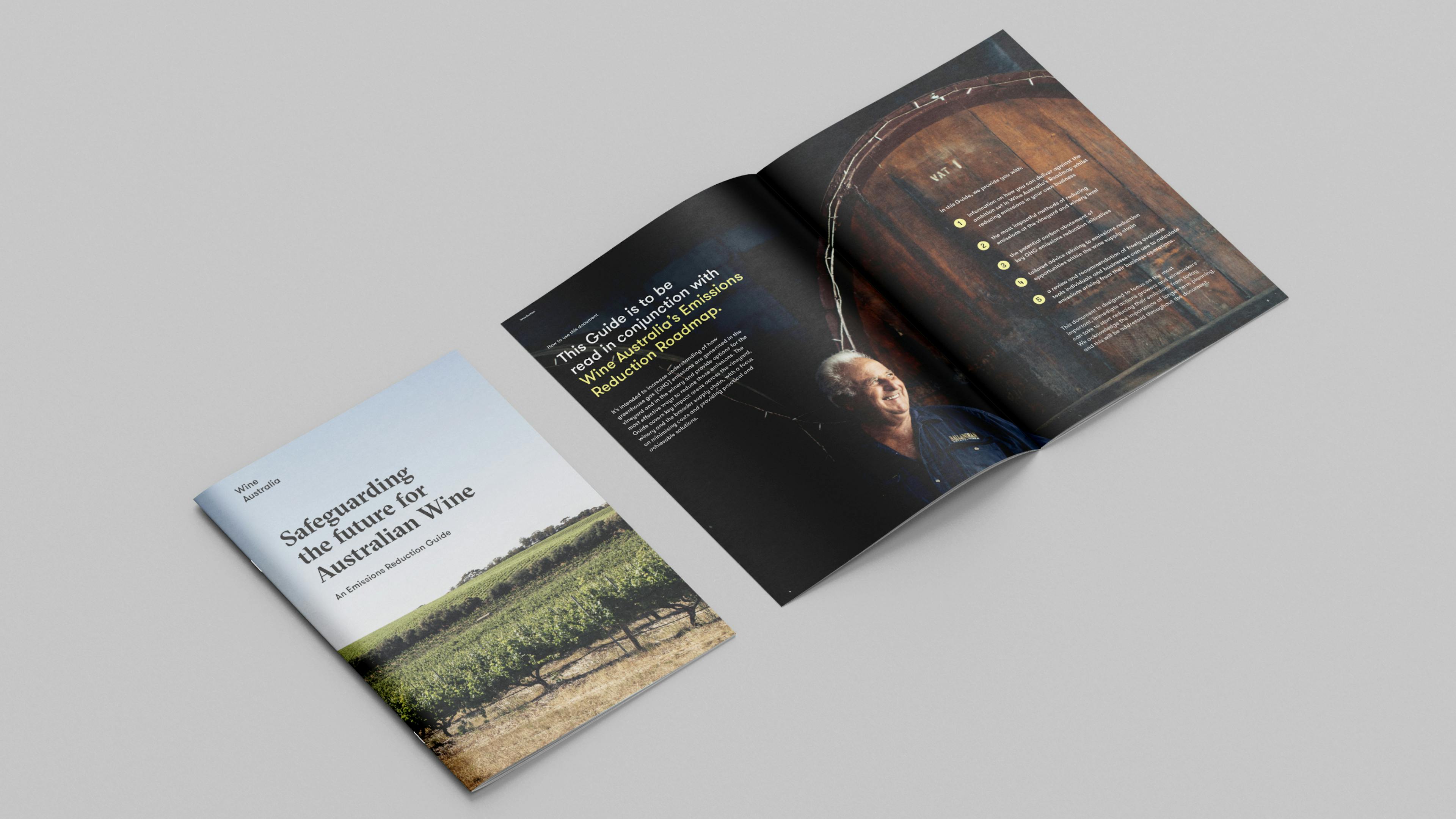
The collaborative approach across the Edge Impact team helped to ensure that the data and reduction pathway could be translated in a way that would drive the engagement needed to create the necessary action.
Using the Wine Australia brand as a foundation, we developed clear communication and storytelling that seamlessly supported and breathed life into the technical and strategic initiatives.
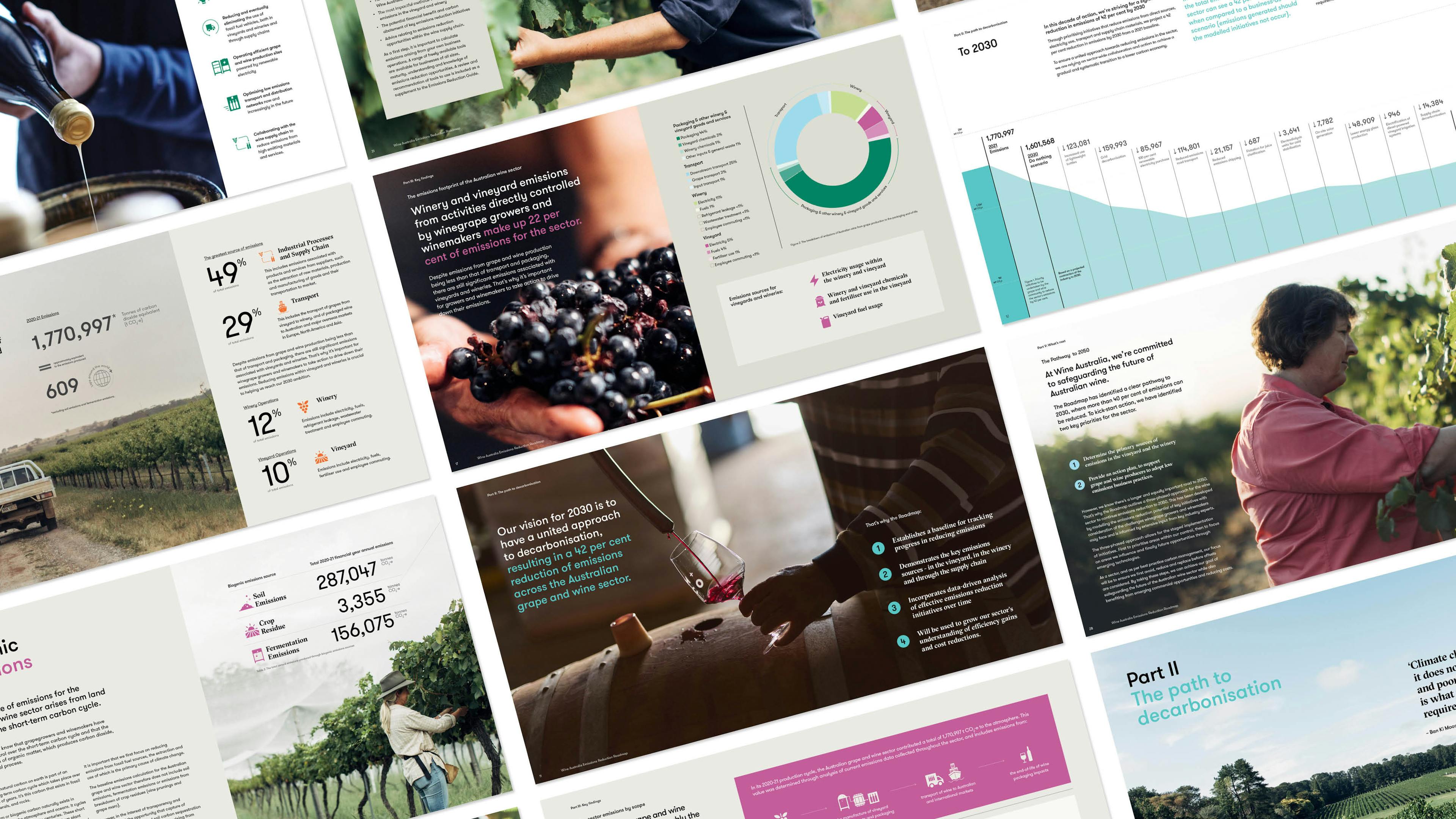
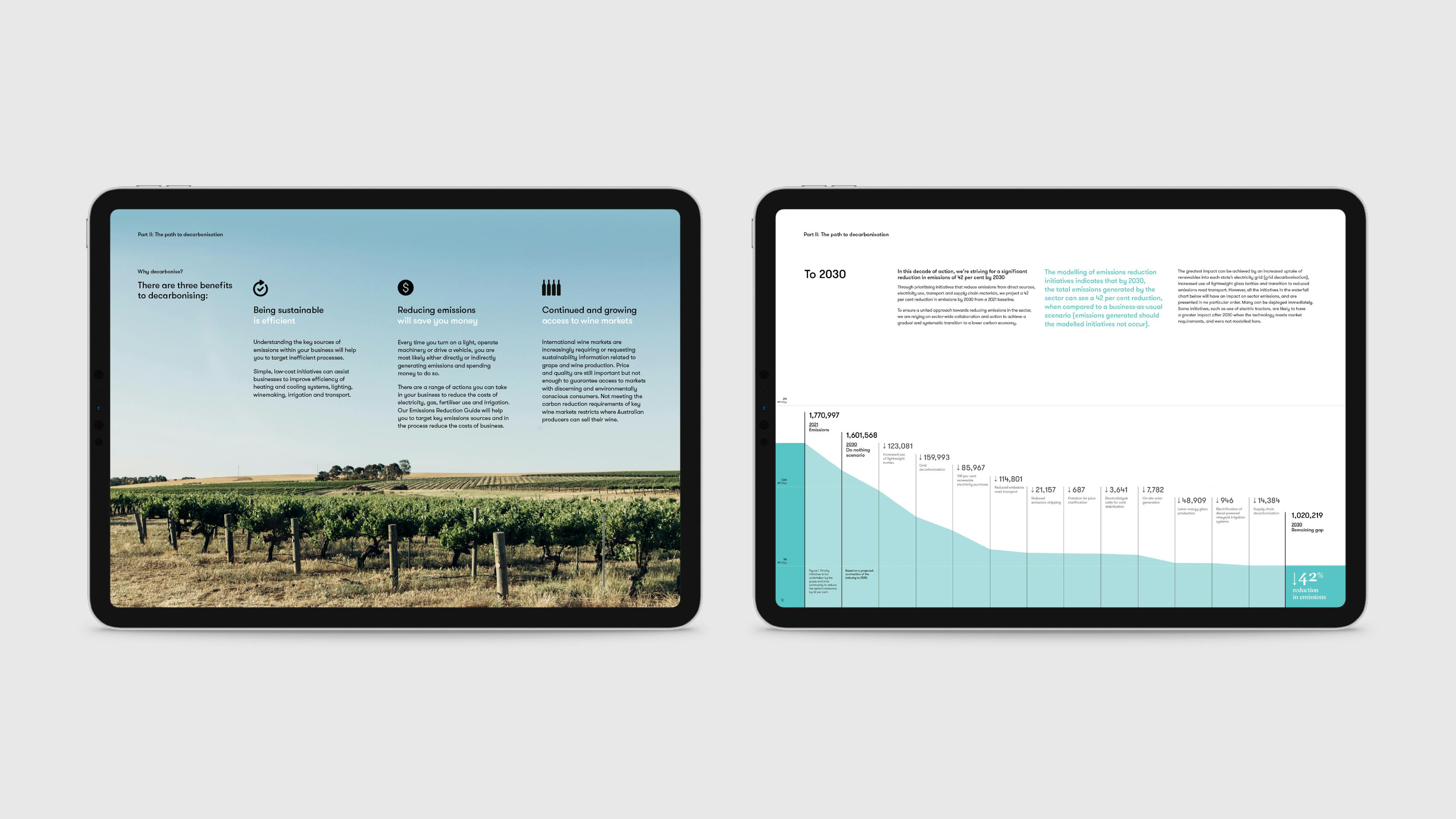
The Australian wine industry is now leading agricultural production in Australia, with a fully feasible roadmap that sets out exactly what the industry needs to do, and how best to do it, to reach the industry’s emissions reduction targets.
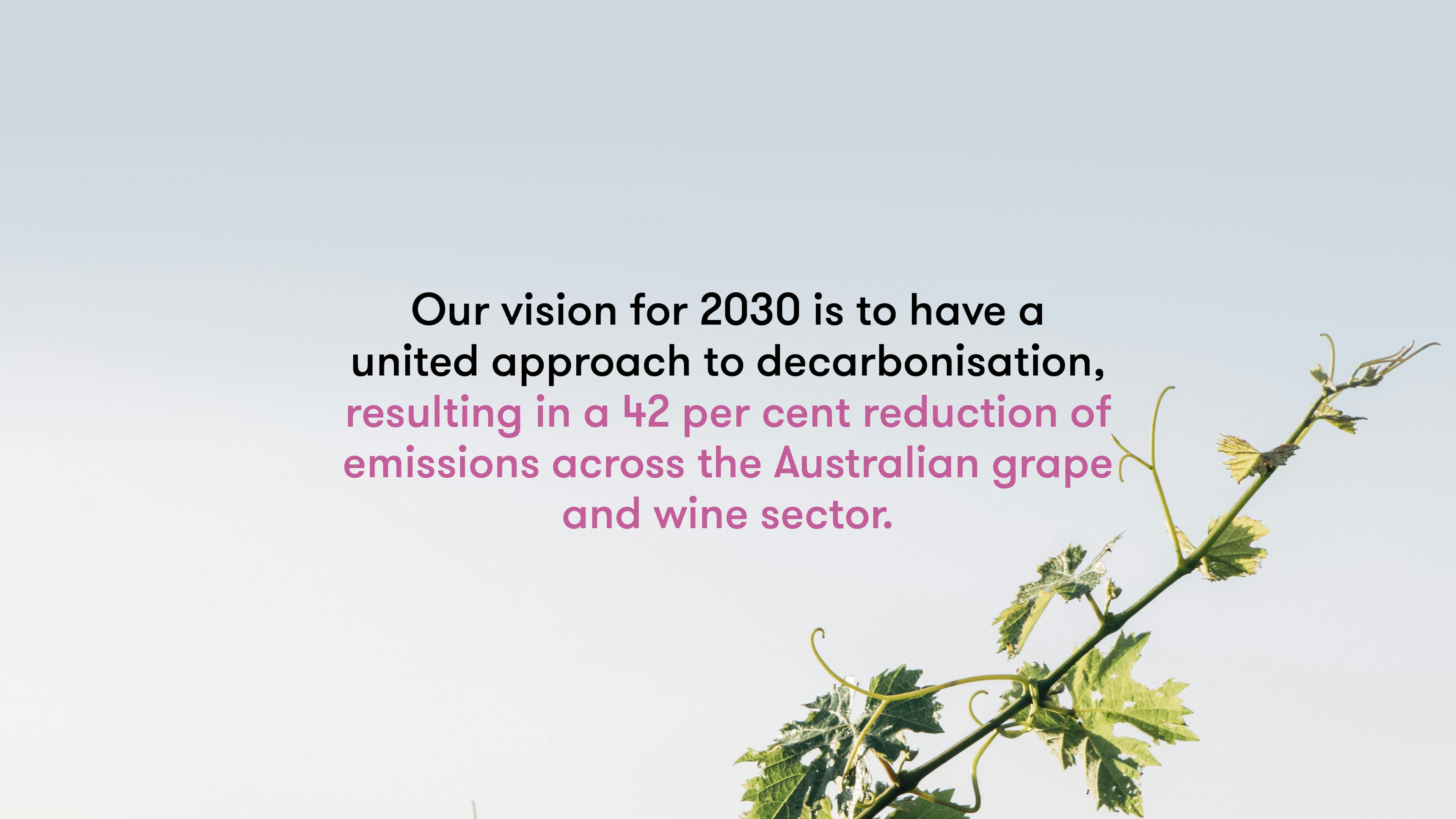
The Result
Equipped with a suite of branded communications assets, the Australian wine industry now possesses key tools such as the Emissions Reduction Roadmap. This roadmap is supported by a comprehensive Emissions Reduction Guide and a detailed Carbon Accounting Tools document. With these resources at its disposal, the industry is well-positioned to reduce its emissions profile by 42% by 2030 and ultimately reach net-zero by 2050.
Each output is audience-specific; the Guide and Tools are designed for ready adoption by growers and winemakers, while the Emissions Reduction Roadmap provides an excellent engagement tool for conversations with markets and customers, with the modular assets enabling key messages and data to be shared easily.
Owing to the extensive industry engagement, the end products reflect what the industry considers viable and doable, without compromising operations.
The development of the Roadmap with industry also served as an educational opportunity for many participants, who have been given the insights and science necessary to understand why particular practices should be favoured over others, and where quick wins exist in their operations to save time, cost and emissions.
Related case studies
Affordable, achievable bushfire-resilient housing
A Toolkit for Boosting Bushfire Resilience
CRJO partnered with Edge to develop a toolkit for retrofitting homes, boosting bushfire resilience for homeowners, councils, and industry.

A feasibility study for Food Innovation Australia Limited
Australia’s Path to Reducing Food Waste by 2030
Edge Impact led a consortium to assess feasibility and actions for FIAL’s food waste target.

Transitioning to a low-carbon economy
Supporting Viña Concha y Toro’s Decarbonisation Journey
Viña Concha y Toro partnered with Edge to assess climate risks and meet TCFD requirements.



